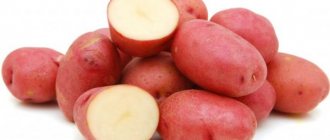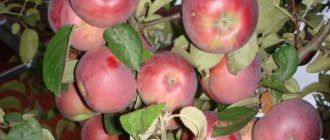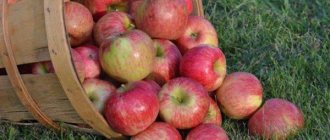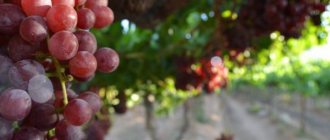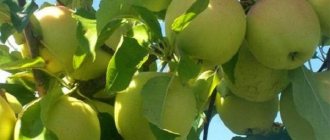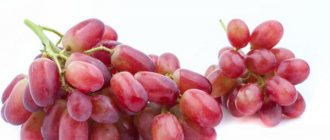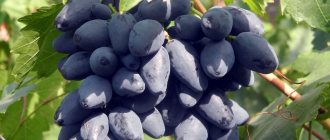History of the variety's creation
The President plum variety was created by breeders from Hertfordshire (England). When breeding the variety, experts tried to ensure that this plum had high productivity and high growth vigor. And their efforts were crowned with success - the new variety was significantly different from other plums existing at that time in its yield, the harvested crop perfectly tolerated long-distance transportation, and the seedlings quickly grew.
Photo of plum President
But the popularity of the President began to increase only from the beginning of the last century, when gardeners not only in England, but also in other European countries paid attention to this highly productive plum variety.
The President plum is still grown on an industrial scale, but mainly in Western Europe, as well as in private farms.
Hungarian plum - description of the variety, photos and growing tips
The name "Hungarian" comes up often. This is a rounded lady's hat, this is a shortened leather men's jacket, and a hearty meat dish, there is even a fiery dance with the same name. But we are interested in the Hungarian plum variety, the photo description of which will be given below.
- General characteristics
- Homemade, ordinary, Ugorka or Moldavian
- Donetsk
- Belarusian
- Voronezh
- Michurinskaya
- Pulkovskaya
- Moscow
- Korneevskaya
- A little about caring for plums
Homemade, ordinary, Ugorka or Moldavian
This is the Hungarian variety most beloved by gardeners in the South. We love it not only for its abundant harvests (up to 150 kg per tree), but also for its high resistance to various stone fruit diseases. The Domestic plum begins to bear fruit after 7-8 years, but it lives for more than 30.
The berry is small (no more than 20 g), but very juicy and beautiful: in the sun the dark, almost black violet shimmers with purple. Such beauty can crack if there are prolonged rains during the ripening period (until mid-September).
This truly mighty tree (over 6 m), unfortunately, is completely unsuited to the harsh conditions of the middle zone - a little further than Voronezh and Kursk the plum tree freezes out.
Donetsk
The fruits weighing about 30 g of this Hungarian can be tasted already in early August, if the tree has lived on the site for 4-5 years. There will be few of them - 25-30 kg per tree; in rainy weather they may not ripen.
But, given the fact that they are perfectly stored for up to 3 weeks in the house at room temperature, Donetskaya can also ripen indoors.
Purple berries with dull olive flesh are amazing fresh and in compotes.
Unfortunately, the tree itself is quite capricious - on light, dry sandy soil, the fruit ovaries will crumble.
Under the same name, gardeners know less capricious varieties: Violet (Prince) and Hungarian Azhanskaya.
Belarusian
A new variety (2009), quickly gaining momentum in popularity. There are good reasons for this: the harvest is in just 3 years, large bright blue fruits (35-40 g) of the same size, fairly high yield (more than 30 kg), good keeping quality of fruits and, most importantly, Belorusskaya easily tolerates frosts and is resistant to Clusterosporiosis.
The disadvantage is that this variety is only partially self-fertile.
This variety is a child of the south. Therefore, Voronezhskaya is weakly resistant to frost, but is very resistant to many diseases of stone fruit crops. If the frosts were light, then the hope of reviving the tree is quite real and you have a chance to enjoy the very tasty dense and juicy pear-shaped fruits of this variety, emitting an unusually pronounced plum aroma.
Large plums (almost 40 g) of brownish-purple color are good both for eating and for homemade preparations. The fruits reach full ripeness after harvesting - at home.
This Hungarian variety is self-sterile, but any other plum with a late flowering period is suitable for pollination.
Plum President: description of the variety, main characteristics
Plum President is a late-ripening variety,
in this case, flowering occurs in the second ten days of May, and the fruits ripen from the second ten days of September to early October. Moreover, the intensity of ripening depends on the climatic conditions of the growing region - the warmer the weather, the faster the ripening occurs.
The height of the President plum fruit tree can reach 3.0 m
. The growth rate of the crop is high. The crown shape is round, often oval. The color of the trunk bark is gray with a greenish tint, the side shoots are gray with a brownish tint.
The branches grow at an acute angle to the central trunk, but when the tree begins to bear fruit, the shoots begin to grow to the sides. The leaves are large, without pubescence, dark emerald color, smooth with a characteristic shine. The petioles are quite strong, their length is average.
Plum variety PRESIDENT - video
The flowers are medium in size, with white petals, similar in shape to rose flowers, collected in inflorescences, each of which has no more than 3 buds.
The size of ripe fruits is medium, their shape is round, with a small depression at the base. The weight of the President plum fruit is on average 50 g, but there are also larger fruits - up to 70 g.
The skin is thin, with a smooth surface, covered with a waxy coating, and is easily separated from the pulp.
Ripening plums have a green color; when ripe, they acquire a bright blue color, sometimes bright purple. The pulp is elastic, juicy, and has a green color with a yellowish tint. The stalks are small in size, making the fruits easy to tear off from the branches. The seeds are medium in size, oval in shape, pointed on both sides, easily separated from the ripe pulp.
The taste of ripe fruits of the President plum is sweet with a characteristic sourness. 100 g of product contains 6.12 g of vitamin C, and sugars - 8.5%. The juice of this plum has no color.
On a note!
The tasting assessment of the appearance of ripe fruits is 4 points, and their taste qualities of the President plum are rated at 4.5 points.
Due to their strong skin, ripe plums tolerate long-distance transportation well and can be stored for quite a long time in appropriate conditions.
Interesting article:
Plums for the Moscow region - 25 of the best varieties.
The collected fruits are often eaten fresh, since President plums are very sweet and pleasant to the taste. However, they can also be preserved, since the skin does not burst during heat treatment. The collected fruits of the President variety make delicious compotes, aromatic preserves and jams. The taste of President plums does not deteriorate even when frozen, so they are often placed in the freezer for the winter.
These trees tolerate hot and dry summers well, without reducing their productivity.
Frost resistance of the President plum is quite high; this fruit tree can easily tolerate winters with cold temperatures down to -25-30 degrees
Celsius.
Description and characteristics of the variety
Plum President has the following properties and characteristics:
- A medium-sized, fast-growing tree, giving growth in the first years of up to 40-50 cm. At this time, the shoots grow upward, and only with the beginning of fruiting do they occupy an almost horizontal position. The final height of the plum without the use of growth-restricting prunings is 3-3.5 meters .
- The shape of the crown of young trees is pyramidal, and with age it rounds and becomes spherical. It thickens quite strongly due to its high shoot-forming ability.
- The wood has insufficient strength and is fragile. As a result, under heavy harvest load, the branches can bend greatly and even break .
- Frost resistance reaches, according to some sources, a level of 35-40 °C, although other sources give more modest figures - 25-30 °C.
- Winter hardiness of wood and flower buds is high.
- Drought resistance is high.
- Immunity to diseases and pests is average . Most often it is affected by moniliosis and is attacked by the plum moth, and in some years by aphids.
- The variety has high self-fertility and forms a large number of ovaries, growing alone . But it achieves the best yield and quality of fruits in the presence of pollinators: Stanley;
- Skorospelka Red;
- Peaceful;
- Renklod Altana;
- Kuibyshev damson plum.
President plum blooms in mid-May
President plum fruits are round-oval, large, one-dimensional
Pollinator trees
Although the President plum is considered a self-fertile variety, the presence of nearby pollinating trees dramatically increases its productivity.
The best pollinating varieties for the President plum are:
- Bluefree;
- Red early ripening;
- Stanley;
- Kuibyshev damson;
- Renklod Altana;
- Peaceful.
It is better to plant a couple of trees of different varieties next to the President plum, in this case the yield of all trees will be high.
Productivity of the variety
The productivity of the President plum directly depends on its age. This tree is not early ripening, so the first fruiting of the President plum begins 5 seasons after planting the seedlings in a permanent place.
From trees aged 5 to 10 years, no more than 18-20 kg of ripe fruits are collected. Subsequently, the amount of harvested crop increases to 30-40 kg. But some gardeners noted that with good care, they harvested 70 kg of harvest from one President plum.
Plum President (September 2018) - video
Features of cultivation
The peculiarity of growing President plum compared to many other varieties is that you can pay a little less attention to watering. Of course, with sufficient soil moisture, the harvest will be larger, but temporary drying out will not lead to a fatal outcome. It is especially important to keep the soil in the tree trunk moist during flowering and a little later, at the beginning of fruit growth. But in the second half of summer there is no need to give a lot of water, so as not to cause continued growth of shoots instead of preparing them for winter, as well as cracking of the fruits.
Feeding the tree begins in the third year after planting. Every year, in early spring, a fast-acting nitrogen fertilizer is scattered around the tree. It is better to take urea, but you can also use ammonium nitrate, about 20 g/m2. Before flowering begins, compost or humus is buried shallowly, as well as superphosphate and any potash fertilizer. In this case, organic matter (5–6 kg/m2) can be applied not annually, but mineral fertilizers (50 g of superphosphate and 20–30 g of potassium salt per 1 m2) – every year.
Starting from the second year and until the beginning of normal fruiting, the President plum is formed. Any plum pruning in the middle zone is carried out in early spring, before the sap flows, with the obligatory covering of the wounds with garden varnish. In the first 2-3 years, they try to give the tree the desired shape: as a rule, the President plum creates 2 tiers of skeletal branches of 3-4 branches, directed evenly in different directions. The conductor is not touched for a long time, and only after 3–5 years, if they do not want to allow the tree to grow further upward, it is cut out. During formative pruning, skeletal branches are shortened by 15–20 cm.
Pruning plums is a very delicate procedure: stone fruits, unlike apple trees, do not forgive mistakes and get sick from improper pruning
After fruiting begins, the President plum is pruned lightly. They perform sanitary pruning (cutting out diseased and damaged branches), and, if necessary, if the thickening of the crown is excessive, lightening pruning.
Old plums, which have almost no new growth of shoots, are either replaced with new ones, or rejuvenated by greatly shortening the main branches, but it makes no sense to keep a tree on the site for more than 20 years.
Before the onset of winter, the trunks and bases of skeletal branches must be whitened, protecting them from early spring frost damage. If you add foul-smelling substances to the whitewash, you can protect the trees from hares in this way. But it’s better to tie young plums with pine spruce branches or nylon tights, and the hares don’t touch old trees. Protection from frost as such is usually not required for the President plum.
Video: plum pruning President
Diseases and pests
The President plum has a high immunity to fungal diseases and scab, so the tree is practically not affected by these diseases.
However, the resistance of this variety to other diseases is low, and the President plum may be affected by the following diseases and pests:
- moniliosis;
- plum moth;
- gum flow;
- aphids.
Fungicides!
Drug Skor Fungicide Topaz Drug Switch
Therefore, it is recommended to periodically inspect the crown of this plum. If the first symptoms of a disease or the presence of pests are detected, it is necessary to begin the fight immediately.
Against diseases, it is necessary to spray with solutions of appropriate fungicides. You can fight aphids using traditional methods - soap solution or garlic infusion. If the number of pests is large enough, then it is necessary to treat the President plum with insecticidal preparations.
External description of the tree
President plum is characterized as a plant with an intensive growth rate and is not columnar. Every year the tree produces a large number of annual lateral branches, which requires regular thinning.
Trunk height and crown size
Stone fruit culture reaches a height of 3.5-4 meters. The seedlings are distinguished by their ability to quickly adapt to new conditions; their annual growth is 40 centimeters. The crown of young plantings is similar in appearance to a pyramid, but over time it acquires a spherical shape. In the first years, young growth is directed vertically upward; only after fruiting begins does it assume a horizontal position.
The bark on the President plum is distinguished by its gray-green color and smooth surface. Erect thick shoots are red-brown in color and lack pubescence. The frequently located lentils on the shoots are medium in size and white in color. The leaf blades are large, without pubescence, dark green in color and broadly rounded in shape.
Inflorescences of 2-3 flowers form. Their shape is pink, white in color, and large in size. The fruits are found mainly on bouquet branches.
Taste and type of fruit
The President plum variety is characterized as large-fruited; on average, their weight is 50 grams, but there are also specimens weighing 70 grams. The fruits are mostly one-dimensional, their shape is round, the skin is moderately dense, and there is a waxy coating. The color of plums as they ripen changes from green to blue with a hint of purple. The pulp is moderately elastic, the color is predominantly yellow.
The consumer and commercial qualities of the President plum are at a high level. Tender and sweet pulp has a slight sourness. The seed of the variety can be separated without much difficulty. The juice of the fruit is clear. Tasting rating of plum President out of 5 points 4.5.
The sugar content of the variety is 8.5%, acidity 2.46%, and dry matter 15.5%. The content of ascorbic acid in President plums per 100 grams is 6.12 milligrams.
Advantages and disadvantages of the variety
The main advantages of the President plum variety include:
- fairly high yield;
- excellent taste of ripe fruits;
- the harvested crop tolerates transportation well at any distance without losing its appearance and taste;
- good keeping quality of fruits;
- this fruit tree calmly tolerates hot weather, as well as periods of drought;
- frost resistance of the President plum is quite high;
- the variety is highly resistant to fungal diseases and scab;
- the harvested crop is of universal use.
But the variety also has its drawbacks, the main one of which is low resistance to moniliosis and gum disease, as well as to attacks by aphids and plum moths. This fruit tree also requires regular crown formation.
Cultivation
In order for the plant to form correctly, it requires sufficient space. Dates for planting seedlings: March - in the spring, October - in the autumn. Landing dates guidelines:
- soil structure – loose and crumbly;
- air heating temperature is from 12 degrees Celsius.
Planting in regions with cold climates should be done in the spring to avoid freezing of the seedling in winter. Planting in spring is also important due to the speed of rooting of the plant and the acceleration of the processes of crop formation.
President plum, planted on loamy soil, produces twice as much yield and is more resistant to infectious diseases. You will need to properly care for the tree trunk and provide the soil with moisture and oxygen.
Acidic soil must be limed before planting. The procedure is carried out at the end of October, before the autumn digging of the garden. To lime the soil, you need to:
- spread lime around the entire perimeter of the garden in a proportion of 400 g per 1 sq. m;
- dig up the ground to a depth of 15 cm.
The procedure increases soil permeability, which promotes the activation of beneficial microorganisms and enriches the soil with minerals. To reduce the acidic environment of the soil, wood ash is used at the rate of 2 kg per 1 sq. m.
Recommendations for planting
The choice of landing site must meet the following criteria:
- openness of the area;
- sufficient lighting;
- flat terrain;
- planting is carried out in an area with a groundwater level of at least 2 m, otherwise rotting of the rhizome cannot be avoided.
Planting in the right place will contribute to the proper development and avoidance of fungal infections. Thanks to sufficient lighting, the crown will dry quickly even after heavy rain.
To plant a plum, dig a hole 70 cm deep and 60 cm wide, maintaining a distance of 3 m between trees and 4 m between rows. The seedling is placed in the hole, distributing the rhizome along the bottom. Cover the shoot with soil, making sure that there are no voids; to do this, shake the seedling a little when pouring soil. The root neck is dug in a few cm. The planted tree is watered with a huge amount of water, and the trunk circle is mulched with sawdust.
Care requirements
The President plum variety tolerates drought well, so it does not require excessive watering. Irrigation is required during the rapid development and flowering stage. It is enough to irrigate the tree twice a month, in the amount of 3-4 buckets per tree. Water can be introduced through small ditches 15 cm deep, dug in the tree trunk circle.
The plum tree of this variety tolerates frost well and takes root in temperate climatic zones, which makes it possible not to cover young trees with burlap during the winter. Preparation for the winter period includes whitewashing the lower part of the trunk and skeletal branches, which will prevent a number of problems:
- Destruction of pests and their offspring that overwinter on the plant.
- Protection against fungus.
- Protection from rodents.
Preparation of whitewash: add 3 kg of lime, 1 kg of clay and 300 g of copper sulfate to 10 liters of water. For mature trees, glue is added to the mixture in an amount of 1 kg, and for young trees, lime can be replaced with chalk.
Rodent control is important:
- Rubbing the lower part of the trunk with a mixture of lard and tar soap will help repel mice - the smell will repel rodents;
- Installing a small fence in the form of a mesh will help prevent hares from eating the bark;
- Scattering sawdust soaked in kerosene will help in the fight against mice;
- the trunk is wrapped with roofing felt or other durable material;
- in winter, when a large amount of snow falls, it is trampled down near the trunk.
Planting plum seedlings President
This plum variety develops normally on any type of soil, but this fruit tree feels best on loamy soils.
Important!
President plum does not tolerate excessive soil moisture, so it should not be grown in lowlands, swampy areas, or when groundwater is close to the surface of the earth. Their optimal location is at least 2 meters.
How to plant a young plum tree. Planting a plum seedling - video
The area for planting the President plum should be well lit by sunlight and located far enough from buildings and tall fruit trees that may shade the plant. This fruit tree is not afraid of gusts of wind, but does not tolerate strong drafts.
Purchased Presidential seedlings can be planted in spring or autumn.
The time for planting the President plum is in the spring - at the end of March-April, when the frosts have passed. In autumn, this plum is planted from early September to mid-October. It should be taken into account that at least 25-30 days must pass from the moment the tree is planted to the start of a sharp cold snap.
The main requirement is that the air temperature during landing must be above +12 degrees Celsius.
Photo of plum planting scheme
Advice!
Experienced gardeners say that the President plum takes root and grows better if it is planted in a permanent place in the spring.
It is better to purchase plum seedlings from well-established nurseries or specialized stores. Otherwise, there is a risk of encountering unscrupulous sellers who may offer either the wrong variety or a not entirely healthy seedling.
Before purchasing, you should carefully examine the root system and shoots of the tree. It is better not to buy plants with broken, dry or damaged roots and shoots.
Before planting Presidential seedlings with an open root system, they should be placed in a container with water for a day so that the roots are saturated with moisture. Immediately before planting, the roots of the seedling are dipped into a clay mash.
When planting President plum seedlings in the fall, the planting hole is prepared at least 12-14 days in advance
. And when planting in the spring, the hole is prepared in the fall.
Stages of planting plum seedlings President:
- The area is leveled, all plant debris and weeds are removed, and a hole is dug. Its dimensions should be as follows: diameter - 0.8 m, depth - 0.5 m.
- If you plan to plant a large number of seedlings at the same time, then the distance between the holes should be at least 2-2.5 m, and the row spacing should be up to 4.5 m.
- The top layer of soil selected from the pits is mixed with 2 buckets of compost and 0.5 kg of superphosphate. This nutrient soil mixture is returned to the pit.
- A 1 m long peg is driven into the hole near the center. The seedling is placed in the center of the hole, the roots are straightened across the diameter. When planting, the root collar should be buried 2-2.5 cm into the soil.
- The hole is dug in and the seedling is tied to a support.
- 3-4 buckets of water should be added to each tree.
- Then the tree trunk circles are mulched with a layer of sawdust or straw. The thickness of this layer is 15 cm.
It must be remembered that plum trees do not tolerate the presence of any fruit trees nearby, except apple trees. But any fruit bushes “get along” well with this plum variety. It is best to plant raspberries, gooseberries or black currants nearby.
Landing
Landing rules:
- first prepare the area, which should be fertile, dry and well lit;
- Next, holes are made ahead of time, 80 cm wide and 50 cm deep, into which a mixture of the fertile top layer and fertilizer is filled halfway;
- then, a seedling is placed on a hill made from this mixture, the roots straightened, covered with the remaining soil, compacted, and watered abundantly;
- The distance around the tree is covered with mulch - humus or peat.
It is recommended to plant trees in spring or autumn.
Further care for plum President
The development of the tree, and subsequently its fruiting, will depend on how gardeners care for the planted plum tree. Therefore, you should not forget about watering, loosening the tree trunks, applying fertilizers, timely pruning of the crown, as well as preparing these fruit trees for the winter.
Irrigation regime
Although the President plum is highly resistant to periods of drought, it is better to water regularly in order to obtain high yields as a result. It is best to arrange drip irrigation in each tree trunk circle. But you can also introduce moisture along the edges of the tree trunk circles into specially dug circular furrows.
During the period of active growth of green mass, the plum is watered once every 12-14 days.
. It is recommended to add at least 4 buckets of water to each fruit tree. By August, the volume of watering is reduced to 2.5-3 buckets of water.
Feeding plum trees
Until this plum tree begins to bear fruit (in the first 5 years after planting the seedlings), it is enough to fertilize it only once a year - in the spring. For each square of the tree trunk circle, add 1 tbsp. l. urea and 1.5 tbsp. ammonium nitrate.
From the moment fruiting begins, this fruit tree requires more nutrients, so fertilizers for the President plum are applied not only in spring, but also in autumn.
Spring feeding should contain:
- a bucket of compost or rotted mullein;
- 1.5 tbsp. l. urea;
- 1 tbsp. l. potassium chloride;
- 2 tbsp. l. superphosphate.
At the beginning of autumn, when the fruits begin to actively ripen, the plums are fertilized again. You need to add 4 tbsp to each square of soil. l. superphosphate and 2 tbsp. l. potassium salt.
Pruning plum President
This plum variety annually produces a large number of young shoots, which over time greatly thicken the crown. At the same time, a large amount of nutrients is spent on the growth of shoots and foliage, as a result, productivity suffers.
Formative pruning of the President plum is carried out in the first three seasons of the tree’s life.
. In this case, all shoots are shortened by 20 cm. The formed crown should have two tiers, each of which should have no more than 3 branches.
Pruning fruit trees. Plum variety "President" - video
Starting from the age of 3, rejuvenating pruning of plum trees is carried out to prevent thickening of the crown. Usually the main trunk is shortened by a third, and the side branches by 2/3 of the length. In the southern regions, such pruning is carried out in early spring, before the buds open. In colder regions, rejuvenating pruning of the President plum is postponed until the fall.
Sanitary pruning of plum trees is carried out as needed throughout the summer season. In this case, all broken, damaged and dried shoots are removed.
Characteristics of the "President"
"President" has characteristics that distinguish it from other tree varieties. Therefore, pay attention to the characteristics so that problems do not occur during harvesting.
The gardener provided an overview of the “President” plum variety in his video below:
Productivity
“President” is distinguished by a fairly early fruiting period - 5-6 years from the moment of planting. From this age and up to approximately 10 years, the harvest can be 17 kg of fruit, and after that, up to 40 kg of fruit can be collected from one tree, which is quite a lot. If you pay maximum attention to the health and condition of the tree, the harvest can increase to 70 kg.
Winter hardiness and drought resistance
“President” is considered extremely resistant to both cold winters and very hot summers. For example, in the severe winter of 1968-1969, trees froze by one point, and in the winter of 1978-1979. – by 3.3 points, that is, the average degree of freezing is 2 points, which is quite a bit.
Pollination
Pollination of fruit trees is the key to a good harvest, but before you plant different types next to each other, you should find out which varieties will have a beneficial effect and whether you can get the maximum yield.
“President” is a highly self-fertile tree, however, it can also be combined with certain varieties, which include:
- Stanley;
- Ternosliv Kuibyshevskaya;
- Joyo;
- Peaceful;
- Rival;
- Red early ripening;
- Renklod Altana;
- Amers;
- Katinka;
- Vision;
- Kabardian early;
- Temple Renklod;
- Rusch Gestetter;
- Rival.
Ripening time
In mid-May, flowers already appear on the trees, but the fruits ripen quite late - in hot summers the timing falls in the second ten days of September. With cool summers, the fruits may ripen by the end of September or even by the beginning of October.
Transportability and shelf life
Dense fruits with durable skin can easily withstand transportation. During transportation, neither their quality nor appearance suffers, even if the fruits are still unripe, which is why many people use this variety for sale - the marketable appearance of the fruit is not lost. If you harvest the crop in early September, it can be easily transported over the longest distances.
Not fully ripened plums can be stored in basements or warehouses for 14 days. If the fruits were picked ripe, their shelf life in the refrigerator is 5-7 days.
Resistance to diseases and pests
This variety does not have immunity from diseases, so the tree requires additional processing and care. Has average resistance to the following diseases:
- Moniliosis is a fungal disease. The spores overwinter on tree bark or are carried by the wind. The plum becomes infected with moniliosis during the flowering period - the leaves become brown, fall off, and the fruits soften and become covered with white rot, after which they begin to mummify. To prevent this, treat the tree with a 3% solution of Horus before the tree blooms or 15-20 days after. As a preventive measure, do regular pruning, collect and burn infected fruits in a timely manner, and clean the trunk of dead bark and whitewash.
- deposition - sticky, viscous streaks and cracks appear on the plum trunk, and the bark becomes thin. In this case, use fertilizers that will strengthen the tree's stability. Apply according to fertilization schedule. And as a preventive measure, treat the sections after pruning with garden varnish or oil red.
- Plum dwarfism is a fungal disease that a plum becomes infected with during grafting of a seedling. The essence of the disease is slower growth, fragility and thinning of leaves, and possible premature death of the plum. The disease cannot be treated - the plum must be uprooted and burned. Carefully examine the planting material and purchase it only from experienced gardeners in nurseries so as not to encounter this disease.
Parasites harmful to trees:
- The plum shoot moth is a butterfly that lays eggs at the base of the buds and pupates in early June-July. The ovaries on the tree wither, the leaves become gnawed and shriveled, the buds and tops of the shoots are shrouded in cobwebs. Treatment with Chlorophos helps against plum moths; carry out the procedure at the end of April - May, when the buds begin to bloom. Loosening row spacing and tree trunk areas in early summer helps as a preventative measure.
- Plum pollinated aphid slows down the growth of seedlings and prevents the formation of new buds. The ovaries begin to dry out and wither, the fruits do not fill and remain small and wrinkled. Mineral oil preparations help fight (0.2-0.3 l per 1 sq. m.). Apply treatment in early spring, before sap flow begins. As a preventive measure, remove root growth, dead bark on the trunk and skeletal branches, and whiten the trees every year.
- Plum codling moth - damages the petioles of the fruit and gnaws through the fruits. Because of this, the plums do not fill, but ripen ahead of time, rot and fall off. You can fight the codling moth using pine concentrate (2-4 tablespoons per 10 liters of water). Treatment occurs during the growing season, if necessary. As a preventative measure, loosen the soil in the tree trunk area, clean the trunk and skeletal branches of old bark, trim damaged shoots and burn the carrion.
What other diseases can occur in plums can be read in this article.
Plum President: reviews from those who grow the fruit tree
Nina, 48 years old, Moscow region: You should not rush to pick the fruits, since after picking they do not ripen at home. I would especially like to note the good transportability and keeping quality of the harvested crop. If it is possible to constantly irrigate the tree trunks, then it is possible to grow the President variety on an industrial scale.
Olga, 54 years old, Leningrad region: I really love plums, so I planted several varieties of this fruit crop in my garden. Several years ago I also planted the President variety. Last year I harvested the first harvest from this tree. There were few fruits, but they turned out to be sweet and juicy. I'm waiting for the next harvest - I plan to make compotes and jam from them.
Alexandra, 55 years old, Moscow region: The President planted a couple of plum seedlings at his place. I bought two just in case, in case one freezes. But both took root and never froze over the winter. The first harvest was harvested 4 seasons after planting. There weren't very many plums, so we ate everything fresh. The next year, 10 kilograms were collected from each tree - enough for both food and dessert preparations. The fruits are very tasty and can be stored fresh for a long time. I recommend this plum variety to all gardeners.
With proper planting and proper further care of the plum, the President will not get sick, will actively grow and will bear fruit regularly and abundantly.
Reviews from gardeners
The President variety is in demand and loved. It is happily bred to this day in many countries, both by amateur gardeners and farms.
Nikolay, 49 years old
“I grow President plum for sale. The taste and appearance are presentable. Yields are high. The variety is in great demand on the market - it’s flying off the shelves at lightning speed, and the price is quite high.”
Olga, 55 years old
“I am a gardener with many years of experience. I grow several varieties of plums, but the President is my favorite - I really like the taste and aroma of its fruits, which make amazing-tasting jam and a very aromatic compote, and my granddaughters love to eat them this way.
On my site there are several other varieties that pollinate the President well, and he has never let us down. It produces a harvest every year, and the quantity of fruit is pleasing. I’ve never seen any illnesses.”

